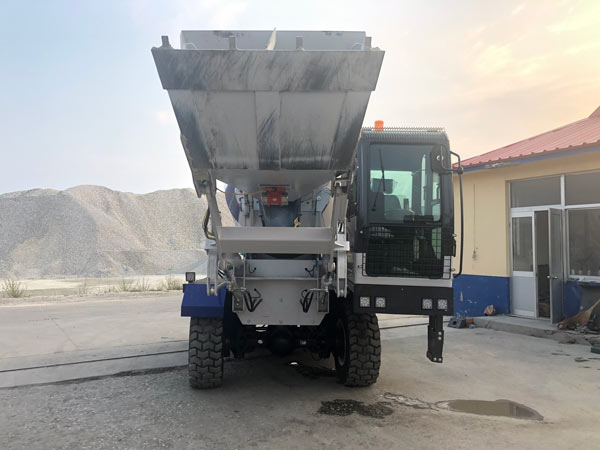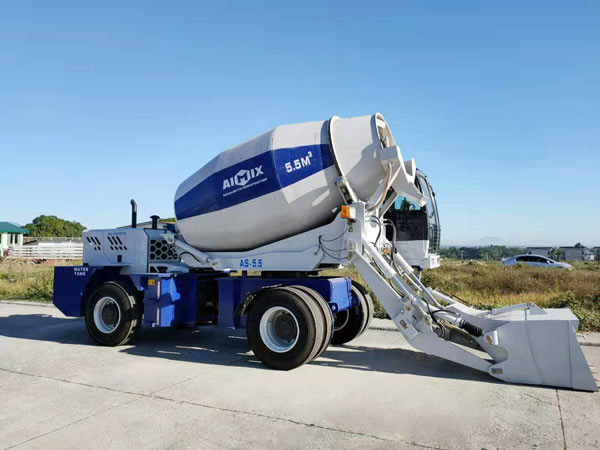


Proper use of a self-loading mixer not only boosts efficiency but also reduces operational costs, making it a smart investment for construction projects.
Improving efficiency on construction sites is crucial for saving time and reducing costs. Self-loading concrete mixers provide a flexible and productive way to mix concrete on-site. With the right methods, operators can make the most of these machines. This guide will explain practical steps to increase efficiency using a self-loading concrete mixer.
The Aimix self-loading concrete mixer combines multiple functions, including loading, mixing, transporting, and discharging concrete. These machines streamline concrete production by reducing the need for separate loaders, mixers, and trucks. Self-loading mixers operate directly on-site, cutting down on transportation time. Their versatility makes them ideal for many construction projects, especially in remote locations. Knowing these benefits helps operators understand the potential for improved efficiency.

Regular maintenance ensures the concrete self-loading mixer operates smoothly and reduces downtime. Inspect parts like the drum, hydraulic systems, and tires before each use. Check fuel, oil, and water levels regularly to prevent unexpected breakdowns. A well-maintained machine runs more efficiently, requiring less repair time and lowering operational costs. Plan for routine maintenance to keep the mixer in peak condition and prevent slowdowns.
Loading materials in the right proportions improves mixing quality and saves time. Use the machine’s built-in bucket to load materials accurately and steadily. Avoid overloading, as it can strain the mixer and slow down the process. Consistent and balanced loading helps achieve the correct concrete consistency, leading to smoother operation and faster work on-site.
Mixing speed directly affects the quality of the concrete. Operate the mixer at an optimal speed to produce uniform concrete without overworking the drum. Adjust the drum rotation based on the type and quantity of materials. Proper speed prevents excessive wear and tear, which improves efficiency and extends the machine’s lifespan. This allows for more continuous use without frequent stops for maintenance.
Self-loading concrete mixers are designed to move easily around construction sites. Use this mobility to your advantage by positioning the machine close to where the concrete is needed. This reduces the time spent transporting concrete and minimizes labor requirements. Efficient site movement not only saves time but also allows workers to focus on other important tasks, speeding up the project.
Self-loading mixers come with a water tank and pump, which allows operators to adjust water levels as needed. Proper water control is key to achieving the right concrete consistency. Too much or too little water affects the quality of the mix and can slow down work. Using the water control system ensures consistency and helps reduce wasted materials, increasing overall efficiency.
Plan concrete mixing during times when the construction site is less busy. Off-peak hours allow the mixer to work without interruptions from other activities. This scheduling reduces delays and improves focus, allowing for faster and smoother mixing. Timing the mixing process strategically helps avoid bottlenecks and maximizes the mixer’s productivity.

Proper training equips operators with the skills to use the machine efficiently. Training should cover all controls, safety protocols, and maintenance practices. Skilled operators can handle the mixer better, reduce errors, and operate the machine at optimal speeds. This training ultimately leads to smoother workflows and prevents costly mistakes, helping the project stay on schedule and within budget.
Cleaning the mixer after each use prevents concrete buildup, which can damage the drum and slow down future operations. A clean mixer works more efficiently, reducing the chances of future clogs and allowing for faster mixing in the next session. Regular cleaning extends the machine’s lifespan and keeps it ready for use, supporting continuous efficiency on-site.
Using a self-loading concrete mixer can significantly increase construction efficiency when operated correctly. From regular maintenance to proper unloading, each step in the process contributes to smoother operations and cost savings. With these tips, operators can maximize the mixer’s potential and streamline concrete production on any site.
